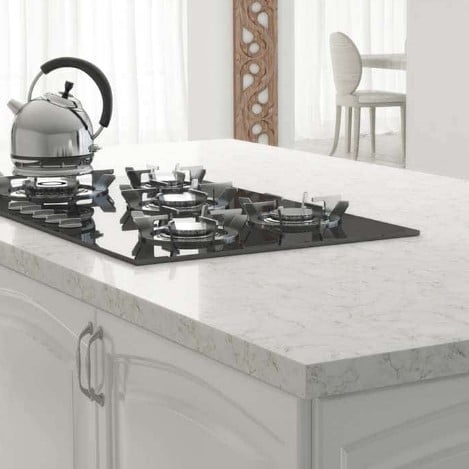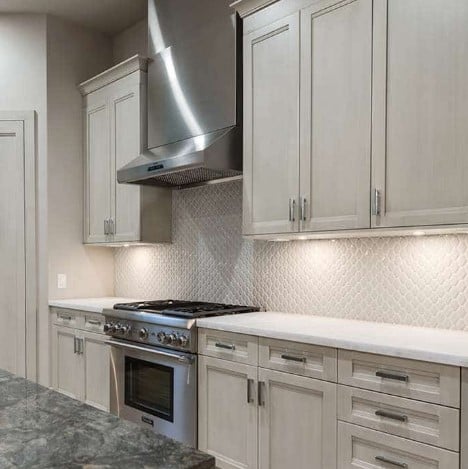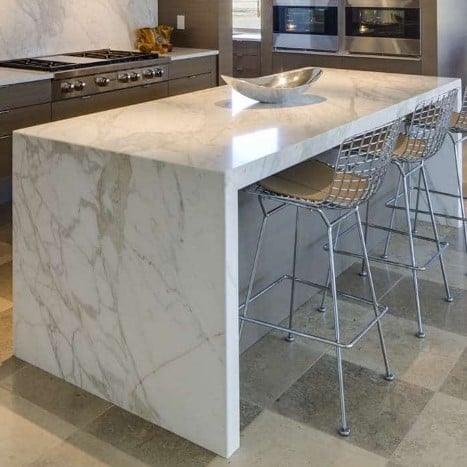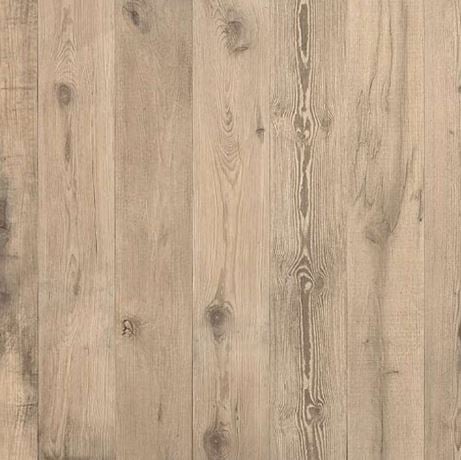
If you’re thinking about renovating or redesigning your kitchen, chances are you’ve seen plenty of examples of white kitchen designs. Timeless and beautiful, white kitchens are contemporary, airy, bright and simple—and they’re extremely popular for a variety of good reasons. Let’s take a look at some of the benefits and potential downsides to choosing a white kitchen design.

Pros of a White Kitchen
There’s a reason why white kitchen designs are so well-loved. White kitchens are:
Bright: The color white naturally reflects light, letting it bounce around the space. As a result, white is a great paint color and cabinet color for a kitchen that doesn’t have much natural light. Polished white countertops, like marble, will enhance the room’s brightness even further.
Spacious: A bright room with plenty of light gives the illusion of more space, making your kitchen appear larger.
Versatile: White walls, cabinets, counters and floors all pair well with a wide range of other colors and finishes, making white a versatile choice for your kitchen.
Timeless: White is classic and offers timeless appeal—it’s always on-trend, so a white kitchen design is likely to remain in style for years to come.
Easy to Update: Due to the versatility of a white kitchen, it’ll be easy to update and swap out different aspects of your design in the future. If you end up wanting a different style hardware for your cabinets, a different faucet finish or new appliances, you’ll be able to choose from a broad range of options since white complements almost everything.

Cons of a White Kitchen
However, as with every design style, white kitchens do have some negative aspects you will want to keep in mind. There are two main reasons why a white kitchen design may not be a great choice for everyone:
You’ll have to clean more often. From a practical standpoint, white cabinets, counters and tile are likely to appear dirty more quickly than other colors. Darker colors are typically more forgiving in this way. You may have to clean your white kitchen more often in order to keep it looking its best. This may be a particularly big downside if you have small children.
One way to avoid this potential problem is to choose a countertop surface that has a pattern, which will help hide small spots and spills until you have time to clean them. For instance, a marble variety with fine veining or a light-colored granite are great options for your white kitchen.
Cabinets and walls painted with a glossy finish will also be easier to clean, so you can wipe off smudges and dirty quickly and keep your kitchen shining.

White can seem cold. All-white kitchen designs can sometimes appear cold and sterile, rather than bright and airy. The good news is that there are plenty of techniques you can use to avoid this. To start, incorporate warm elements in your kitchen to help it appear more welcoming. Small décor like potted plants and copper fixtures, along with larger elements like wood-look floors and gold vein marble counters, can instantly add warmth to your space.
Another way to add interest and color to your white kitchen is by opting for two-toned cabinets that give it a dynamic, contemporary look. Go for white upper cabinets and choose a darker color for the lower cabinets—it’s the best of both worlds.





